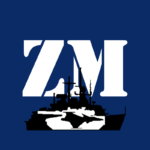One of the main rotary-wing capabilities in service with the United States Marine Corps is the CH-53E Super Stallion heavy-lift helicopters. Recently, these aircraft had a new opportunity to demonstrate their capabilities by airlifting a total of eight (8) retired 8×8 wheeled Stryker armored vehicles from the U.S. Army to Fort Indiantown Gap, Pennsylvania, where they will be used as targets in shooting exercises.

Although they are projected to be replaced by the more modern and powerful CH-53K King Stallion in the future, the CH-53E Super Stallion remains the primary heavy-lift rotary-wing platform in service with the Marine Corps. This is demonstrated by its significant cargo capacity and ability to transport personnel, both in its cargo holds and via slings for suspended loads.
This is the latest case recently reported, where a CH-53E Super Stallion helicopter from the Marines, along with specialists from the U.S. Air Force, supported the airlift of a total of 15 8×8 Stryker Armored Fighting Vehicles (AFVs) retired by the U.S. Army to be used as targets at Fort Indiantown Gap, located in Pennsylvania.


According to the official publication of January 24, authorities at Fort Indiantown Gap acquired a total of fifteen (15) retired Stryker AFVs from various units of the U.S. Army, including the Pennsylvania National Guard. Stripped of their engines, transmissions, and weapons, their incorporation is intended to use them as targets in various types of training, including those focused on supporting indirect artillery fire.
However, despite being stripped of the aforementioned components, the support of a CH-53E Super Stallion from the Marine Corps’ Heavy Helicopter Squadron 772, a reserve unit of the USMC, and the U.S. Air Force’s 621st Contingency Response Group, was required for the airlift of a total of 8 Strykers to Fort Indiantown Gap.

Personnel involved stated that a CH-53E was requested due to its greater lift capacity compared to the current CH-47 Chinooks in service with the U.S. Army. “Our CH-47s can’t lift the Strykers, not even the bodies with the weight they currently have, so I essentially called the CH-53 unit at JB MDL unexpectedly and got in touch… and we started planning the operations,” said Captain Michael Shea, Fort Indiantown Gap’s Range Management Authority.
However, beyond the capabilities of the CH-53, the sling-load transport of the Strykers to their final destination was not without difficulties, as the transport operation had to be carried out under sub-zero temperature conditions after the area had recently experienced a snowstorm.

For the Marine Corps crews, this also served as a valuable experience, as they don’t usually transport such heavy loads, and working together with Air Force and Army personnel, who have significant experience in sling-load operations, was also beneficial.
“We work with them almost every week doing sling loads,” said Sergeant Major Christian Von Denes, sling load specialist with the 621st Contingency Response Group. “Typically, it’s just a concrete block, sometimes Humvees or tactical vehicles, and since we work closely with them, they contacted us asking if we’d like to be the sling load team for the vehicles here.”

Finally, the remaining seven Strykers out of the total fifteen units to be transported to Fort Indiantown Gap will arrive by land in the coming days.














